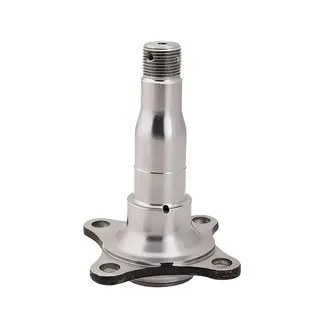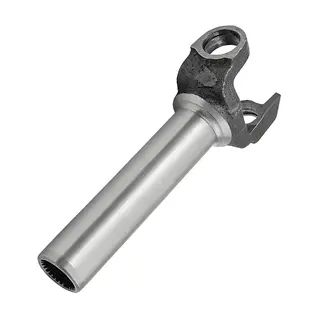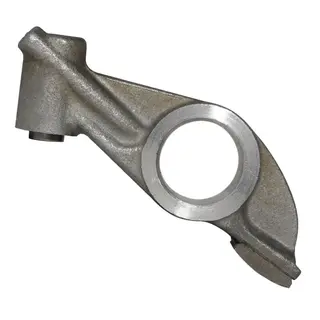In the field of metalworking, forging is an essential process, and heating is an indispensable part of the forging process. By heating the metal to the appropriate temperature, not only can the metal's plasticity be increased, allowing it to withstand greater deformation without cracking, but the deformation resistance of the metal can also be significantly reduced, reducing the force required for forging. Additionally, the correct heating temperature can allow for a recrystallization process, resulting in finer grains and better structure in the forged part, thereby improving its mechanical properties. Therefore, heating is not only an important operation in hot forging production but also a key factor in ensuring forging quality and efficiency.
In forging production, heating is an indispensable first step. It not only provides the necessary conditions for metal deformation but also directly affects the quality and efficiency of subsequent forging. Below is the basic process of forging heating.
According to the production work order, the metal raw material is loaded into the designated heating furnace in the prescribed order. During this process, the type and quantity of the material must be carefully verified to avoid confusion. To ensure that different types of metal do not mix during heating, markers such as refractory bricks should be placed between types and detailed records should be kept in the original logs. Although this process seems simple, it has a crucial impact on the subsequent forging production.
The metal raw material is heated in the furnace to reach the forging temperature, after which it is removed and sent to the forging machine for production. The control of the heating process has a direct impact on the quality of the forging. Improper heating can lead to issues such as metal cracking and excessive deformation resistance, affecting the smooth progress of forging.
The determination of heating standards is crucial during the forging heating process. To ensure the billet does not crack and that the temperature difference across the billet's cross-section is minimal when removed from the furnace, rapid heating should be used whenever possible. This not only improves productivity but also reduces burning losses. However, rapid heating is not suitable for all situations and must be adjusted based on the specific metal material and production requirements.
The choice of heating method in forging has an important impact on both production efficiency and product quality. Common heating methods are primarily divided into two categories: flame heating and electric heating.
Flame heating uses fuels such as coal, coke, heavy oil, diesel, gas, or natural gas to generate high-temperature gases (flames) within a heating furnace. These gases transfer heat to the surface of the billet through convection and radiation, which then conducts inward to heat the billet to the desired temperature. Flame heating is widely used because of the convenient fuel sources, simple equipment, low heating costs, and the ability to heat billets of a large size. However, its disadvantages include poor working conditions, slow heating speed, and difficulty in controlling temperature and heating quality.
Electric heating converts electrical energy into heat to warm the metal billet. Electric heating devices include resistance furnaces, salt bath furnaces, and induction heating devices. Compared to flame heating, electric heating offers faster heating (such as induction heating and contact heating), easier temperature control (such as resistance furnaces), less oxidation, decarburization, and pollution, better working conditions, and is conducive to mechanization and automation. However, its equipment is complex and requires a larger investment. Electric heating is widely used in die forging or non-ferrous metal forging.
The forging temperature range refers to the interval between the starting temperature (initial forging temperature) and the finishing temperature (final forging temperature) of the forging process.
The initial forging temperature is mainly limited by overheating and over burning. For carbon structural steel, the initial forging temperature gradually decreases with an increase in carbon content, while for alloy tool steels, it should significantly decrease as carbon content increases. Forging workers often refer to whether the steel has good heating properties as "good heat" or "bad heat." For example, low-carbon steel can be heated above 1200°C, which is referred to as "good heat," while high-carbon steel is usually heated to below 1200°C, referred to as "bad heat." The heating capacity of steel is most closely related to its carbon content. Experienced forge workers often use low-carbon steel as a reference and categorize the steel by how much it "eats fire."
The final forging temperature should ensure that the metal billet remains easily deformable before forging stops. If forging is stopped too early above the final forging temperature, various problems may arise, such as the need for additional heating cycles, increased consumption of metal and fuel, reduced productivity, and grain coarsening. The final forging temperature is generally determined by the steel's carbon content. Steel with a carbon content of less than 0.80% (hypoeutectoid steel, such as 45 steel) generally has a final forging temperature around 800°C. For steel with a carbon content of more than 0.80% (hypereutectoid steel, such as T10, T12), the final forging temperature should generally be between 750°C and 800°C, which helps break up the network carbide. During the finishing process, the final forging temperature can be 50-80°C lower than the specified temperature.
Steel ingots are classified into hot ingots and cold ingots. A hot ingot refers to an ingot that is cast and then transported from the steelmaking workshop to the forging workshop, where it is directly heated in the furnace. Hot steel ingots have a surface temperature above 550°C, while cold steel ingots have a surface temperature below 500°C. Hot steel ingots can be rapidly heated directly to the starting forging temperature and then forged after heat retention. If conditions allow, hot steel ingots should be used for forging, as this reduces heating time, oxidation loss, and fuel consumption while preventing defects caused by cooling.
Cold steel ingots require special attention during heating:
The ingots should be placed in the furnace in a way that ensures even heating.
Cold steel ingots must first be preheated in the workshop or furnace before being loaded into the furnace for heating.
Cold and hot steel ingots should not be heated in the same furnace.
When transferring ingots between furnaces, the temperatures of the furnaces should be as equal as possible, with no more than a 100°C difference.
Before heating, check the surface quality of the steel ingots. If serious defects like cracks are found, heating should be stopped.
Heating speed and time are key parameters in forging heating, directly affecting the heating effect of the metal and the final forging quality.
Heating speed refers to how quickly the temperature of the metal rises, measured as the temperature increase per unit of time (°C/h), or the thickness of the heated metal layer per unit of time (mm/min). Factors influencing heating speed include furnace temperature, steel chemical composition, loading method, and steel size. The higher the furnace temperature, the faster the heating speed. The chemical composition of steel determines its thermal conductivity, with higher carbon content reducing conductivity. A denser loading arrangement results in less uniform heating. Larger steel billets result in greater temperature differences between the inner and outer layers.
Heating time is the duration required for the steel to reach the specified temperature. The duration of heating directly influences both production efficiency and forging quality. Steel materials loaded into the furnace differently will experience varying degrees of heating. Dense loading leads to uneven heating, requiring longer heating times. Steel ingots that are overheated must have the furnace temperature reduced to 650-750°C for heat retention before further heating.
Accurately controlling temperature is crucial during the forging process. Temperature measurement methods include visual observation and instrument-based methods. Instrument-based methods include optical pyrometers and thermocouple-based thermometers. Optical pyrometers are convenient and relatively accurate for high-temperature measurements. When no measuring instruments are available or if they are inaccurate, the color of the steel can be used to estimate its temperature.
The heating process for cold steel ingots depends on the steel type and weight. For example, carbon structural steel ingots with less than 0.55% carbon and weighing under 1 ton are generally heated directly in the furnace at 1000-1100°C without low-temperature heat retention. For ingots weighing over 1 ton, such as alloy structural steel, carbon tool steel, bearing steel, and high-alloy steel, a three-stage heating process is typically used.
Forging heating is a crucial part of metalworking. Through appropriate heating standards and methods, it is possible to significantly improve the metal's plasticity, reduce deformation resistance, and improve the mechanical properties of the forged parts. In actual production, heating methods, temperature range, heating speed, and time should be selected and controlled appropriately to ensure smooth forging and product quality. By optimizing the heating process, production efficiency can be improved, production costs reduced, and product quality and performance enhanced, providing strong support for the development of the metalworking industry.



